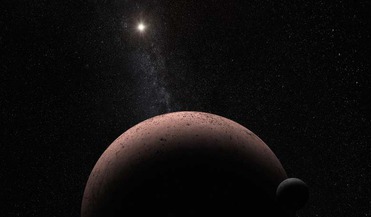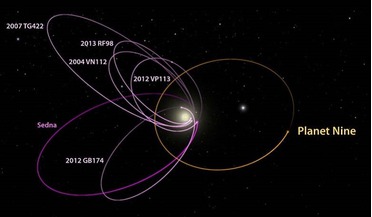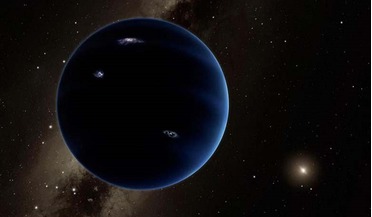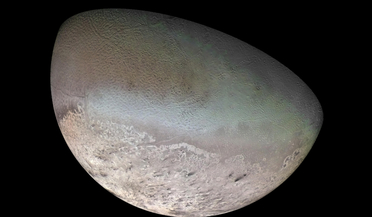 27 April 2016
Dwarf planet MakeMake found to have a moon
27 April 2016
Dwarf planet MakeMake found to have a moon
.... If the orbit is a tight, circular one it indicates that MK 2 is the result of a collision between Makemake and another Kuiper Belt Object. If the orbit turns out to be a wider, more elliptical shape, then MK 2 was more likely to be captured from...
 10 September 2018
IAU wrong about Pluto's planetary status say scientists
10 September 2018
IAU wrong about Pluto's planetary status say scientists
... force in its orbit. Unfortunately for Pluto, this was a double whammy as it shares it’s orbit with other Kuiper Belt objects. However, in a new study published in the journal Icarus, UCF planetary scientist Philip Metzger, who has scoured...
 22 January 2016
Possible “Planet Nine” Discovery Announced
22 January 2016
Possible “Planet Nine” Discovery Announced
...'s orbit after spotting a strange alignment in the orbits of six other Kuiper Belt objects. The main evidence for the claim is that six of the farthest known Kuiper Belt objects have orbits that line up in such a way that would only happen...
 22 February 2016
Researchers constrain a possible location for Planet 9 using Cassini data
22 February 2016
Researchers constrain a possible location for Planet 9 using Cassini data
... modelled how Planet 9 might affect the orbits of the main planets of our solar system, not just Kuiper Belt objects to help constrain the most probable location of Planet 9. Their derived location, shown in green in the included diagram...
 17 June 2020
NASA wants to visit Neptune’s weird moon Triton
17 June 2020
NASA wants to visit Neptune’s weird moon Triton
... planet, Neptune. With an extreme tilt and offset from Neptune's equator by 23 degrees, Triton was once likely a Kuiper Belt object that migrated inwards from a region beyond Neptune and was subsequently captured by the ice giant’s gravity...
 22 June 2020
Icy Pluto may have started off hot with an early ocean
22 June 2020
Icy Pluto may have started off hot with an early ocean
... had a subsurface liquid ocean early in its development; a finding that has implications for oceans on other large Kuiper belt objects. It is generally assumed that Pluto, the far-flung dwarf planet with a giant heart emblazoned on one side...